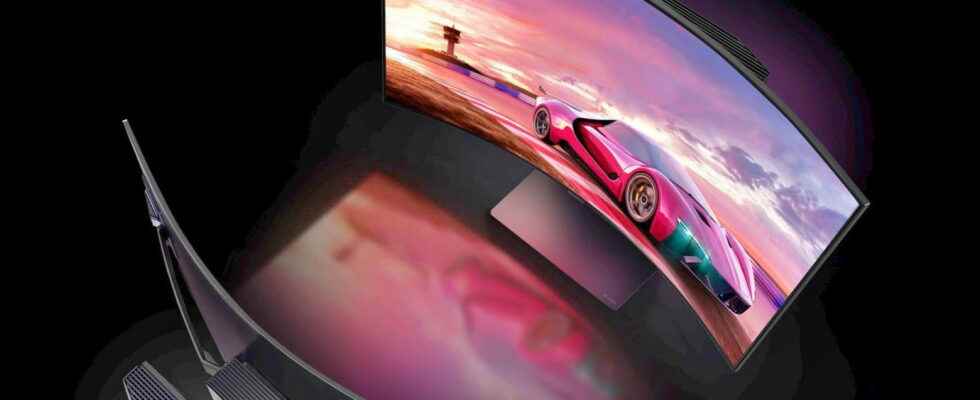LG has just presented the OLED Flex, the first flexible television, which bends at will via its remote control, to switch from classic flat mode to curved mode. An original screen that will especially interest players.
After popularizing Oled technology, LG is once again shaking up the small world of televisions with a curious innovation: the flexible screen. In preview of IFA 2022, the consumer electronics fair which takes place from September 2 to 6 in Berlin, the Korean giant has just presented the LG OLED Flex, an OLED television whose screen can switch from classic flat mode to curved mode . A principle which obviously recalls the Corsair Xeneon Flex presented a few days ago at Gamescom 2022 – the first PC screen capable of curving –, developed precisely with LG. The idea is to offer the choice to the user, depending on whether he wants to watch movies or videos (flat mode) or immerse himself in games (curved mode).
LG OLED Flex: a curved screen at the remote control
In practice, the LG OLED Flex can bend at will. Point of manual manipulation as on the Corsair screen, but a button on the remote control which allows you to alternate between a curved screen (for the game) and a classic flat screen (for the video). Enough to offer real versatility! The screen also makes it possible to adjust the curvature as desired – 20 curvature radii are offered – with a maximum of 900 R. However, we still do not know the number of bends that will be supported over time. The LG OLED Flex can also be tilted up to 10° forward and up to 5° backward, with vertical adjustment of up to 140mm – options often found on displays PC but not on TVs.
On the technical side, the LG OLED Flex is based on a 42-inch Ultra HD-4K LG Display OLED panel of the latest generation, with a refresh rate of 120 Hz, as well as an Alpha 9 Gen 5 processor – which allows gamers to adjust the display size according to their preferences – and a response time of 0.1 ms. It is compatible with Dolby Vision and HDR10+ – for High Dynamic Range, capable of peak brightness of up to 10,000 nits. Small negative point, it is not the last production of LG Galaxy, the OLED EX, which is a pity. Likewise, it does not have Brightness Booster technology, which improves the luminous efficiency of Oled panels and the contrast in order to facilitate the perception of different details. On the other hand, the firm affirms that its anti-reflective filter called SAR – for super anti reflection – will be more efficient than that of the LG C2.
LG OLED Flex: a TV for gamers
The LG OLED Flex has four HDMI 2.1 inputs, which allow you to connect a PC or console, and runs on webOS. It is compatible with VRR game show technologies – Variable Refresh Ratewhich allows you to adjust its refresh rate automatically and in real time –, ALLM – Auto Low Latency Mode, which improves the speed of displaying images when necessary – and AMD FreeSync Premium. Enough to maximize the rendering of video games. In the same vein, it offers cloud gaming applications like Google Stadia and GeForce Now – which therefore allow you to play without a PC or console, simply with a controller or a keyboard and mouse connected. However, there is no DisplayPort input.
The TV features the LX3’s MultiView mode, which allows content from two different sources to be displayed simultaneously and to select which will benefit from the sound, which relies on two 40W amplified speakers. More surprisingly, the LG OLED Flex has an ambient backlighting system on the back, visibly inspired by Philips’ famous Ambilight. At present, LG has not yet given two of the most crucial information: the release date and the price of this flexible TV.

